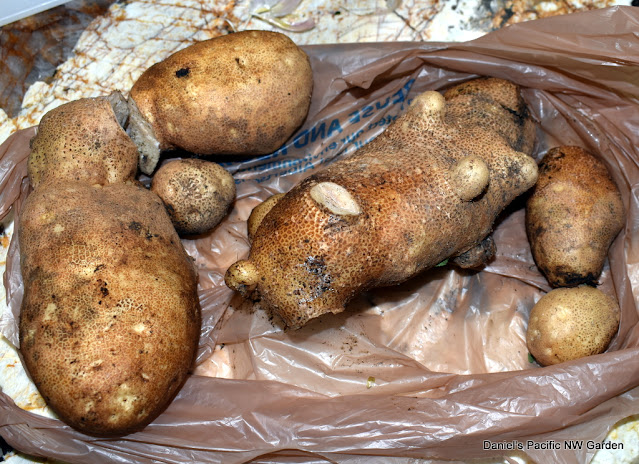Garlic is something I like to do on nature's schedule. It's fall, late Sept. Sept (preferably) or October is Garlic planting time for me. That's why I was in a hurry to construct this raised bed, which meant clearing out the mess of snow peas, weeds, and their trellis that occupied that location (needed doing anyway), buying the parts, leveling the ground, putting it together, and filling the bed, including getting some soil. Getting things is not easy in the time of Coronavirus, especially for someone who is at higher risk for complications.
Anyway, all of that is done. I planted Musik (or is it Music?) that I grew last year, the largest and among the best tasting garlic cloves and heads that I've ever grown. Three reasons: (1) Musik is a great variety, and very delicious. (2) Growing them in shelter. All of those people who insist that deer and rabbits don't eat garlic plants are either just quoting someone else, or their deer and rabbits have not read that book. Repeated munching and torturing of the photosynthetic biomass of growing garlic plants does not make for good production or big bulbs. And (3) the raised bed situation makes for much easier weeding, hoeing, and other care.
I used a trowel with marked measurements, and planted with the bottom of the trench at about 4 to 5 inches. I planted the cloves 6 inches apart, and the rows are a foot apart. I think the raised bed allows for a little closer together planting compared to in-ground, but this is roughly what is done in-ground too.
I also dug up the few remaining bulbs that I had let mature their scapes. I had planted those in Spring and didn't expect much from them. Some of the books say they won't develop cloves if planted in the spring, but these made about four, average sized cloves. I planted those here too, so now one row is from those salvaged garlic cloves, which is good.
Almost everything else here can be done in the course of time over fall and winter. It's a nice feeling to have this job, which I like, done.










